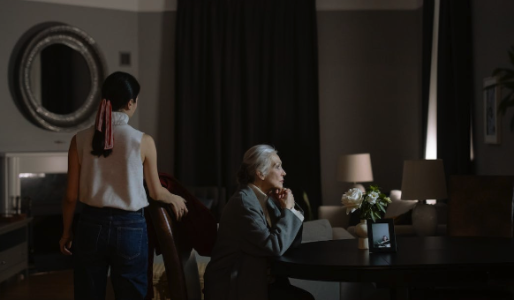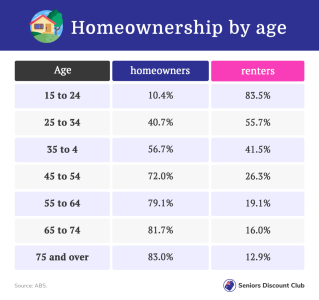Seniors are downsizing to granny flats to help their children have a home
- Replies 16
Australia is currently facing a severe housing affordability crisis, resulting in a surprising new trend: older Ausssies are willingly giving up their family homes to provide their children and grandchildren with a stable place to live.
With homeownership rates at historically low levels, more and more seniors are choosing to downsize to granny flats, allowing their children and grandchildren to reside in the family home.
It's a noble sacrifice many older Aussies say they're willing to make so the next generation can experience 'growing up in a home'.
This comes after it was also recently reported that older Aussies—particularly women—were forced to move in with strangers just to keep a roof over their heads.

In Victoria, there's a significant change on the horizon regarding regulations for granny flats. Reports say some older residents have already relocated to these smaller living spaces.
New legislation is scheduled to become effective by the end of this year in Victoria. It will make granny flats legally available for rent to address the critical housing shortage.
South Australia is also working on a similar plan. But it's worth noting that in both states, it is already legal for family members to rent out these flats—an arrangement that's becoming more popular across the country.
One example of this is Racheal Robinson, a grandmother from Victoria, who decided to sell her long-time family home and use the proceeds to help her son, Scott, his wife, and her granddaughter Renee, in purchasing a property on the Mornington Peninsula.
As she approaches her 80th birthday, she plans to move into a granny flat that will be constructed at the rear of this new property.
In an interview with a news source, Scott explained their situation. He said they had been renting a home for the past decade, and the only feasible way to re-enter the property market was by combining their resources.
'The easiest way to do that was to buy a house where we could have a granny flat and share the costs of living,' he continued.
'That's what we've had to do just to get on to the ladder, to get the Australian dream.'
This new living arrangement will also allow Scott to provide better care and support for his ageing mother in the coming years.
A recent development in Victoria's housing regulations makes this plan more feasible. Under the revised Victorian Housing Statement, a small secondary residence under 60 square metres on a property no smaller than 300 square metres won't need a town planning permit.
These secondary dwellings can also be rented out. However, the construction of such units still requires a building permit, and some planning controls, such as overlays, may necessitate a more detailed approval process.
Just recently, an expert pointed out a concerning issue in Australia: retirees who live in homes with more bedrooms than they require are 'contributing' to the nation's housing crisis.
Michael Blythe, an economist, suggested that seniors should consider downsizing their homes to create more housing space for those who truly need it.
While he acknowledged that finding a solution isn't straightforward, he argued the need to make tough decisions sooner rather than later.
'We've got an excess of bedrooms, just not in the right place,' he said, adding: 'Maybe instead of first home buyers, we should be thinking about last home buyers.'

Members, what are your thoughts on these developments? Do you agree that moving into granny flats and letting your children have the family home is the way to go? And what are your thoughts on downsizing? Please share your thoughts in the comments below!
With homeownership rates at historically low levels, more and more seniors are choosing to downsize to granny flats, allowing their children and grandchildren to reside in the family home.
It's a noble sacrifice many older Aussies say they're willing to make so the next generation can experience 'growing up in a home'.
This comes after it was also recently reported that older Aussies—particularly women—were forced to move in with strangers just to keep a roof over their heads.

Older Aussies are moving into granny flats and giving up their homes so that their kids and grandkids have somewhere to live. Credit: Pexels.
In Victoria, there's a significant change on the horizon regarding regulations for granny flats. Reports say some older residents have already relocated to these smaller living spaces.
New legislation is scheduled to become effective by the end of this year in Victoria. It will make granny flats legally available for rent to address the critical housing shortage.
South Australia is also working on a similar plan. But it's worth noting that in both states, it is already legal for family members to rent out these flats—an arrangement that's becoming more popular across the country.
One example of this is Racheal Robinson, a grandmother from Victoria, who decided to sell her long-time family home and use the proceeds to help her son, Scott, his wife, and her granddaughter Renee, in purchasing a property on the Mornington Peninsula.
As she approaches her 80th birthday, she plans to move into a granny flat that will be constructed at the rear of this new property.
In an interview with a news source, Scott explained their situation. He said they had been renting a home for the past decade, and the only feasible way to re-enter the property market was by combining their resources.
'The easiest way to do that was to buy a house where we could have a granny flat and share the costs of living,' he continued.
'That's what we've had to do just to get on to the ladder, to get the Australian dream.'
This new living arrangement will also allow Scott to provide better care and support for his ageing mother in the coming years.
A recent development in Victoria's housing regulations makes this plan more feasible. Under the revised Victorian Housing Statement, a small secondary residence under 60 square metres on a property no smaller than 300 square metres won't need a town planning permit.
These secondary dwellings can also be rented out. However, the construction of such units still requires a building permit, and some planning controls, such as overlays, may necessitate a more detailed approval process.
Just recently, an expert pointed out a concerning issue in Australia: retirees who live in homes with more bedrooms than they require are 'contributing' to the nation's housing crisis.
Michael Blythe, an economist, suggested that seniors should consider downsizing their homes to create more housing space for those who truly need it.
While he acknowledged that finding a solution isn't straightforward, he argued the need to make tough decisions sooner rather than later.
'We've got an excess of bedrooms, just not in the right place,' he said, adding: 'Maybe instead of first home buyers, we should be thinking about last home buyers.'
Key Takeaways
- An increasing number of older Australians are moving into granny flats and handing over their homes to younger family members due to the nation's housing crisis.
- This trend has seen older Australians making sacrifices, moving out of their homes to allow their children or grandchildren to live in them.
- Changes to legislation due by the end of the year will make it legal to rent out granny flats in Victoria to tackle the issue of inadequate housing availability.
- Economist Michael Blythe said seniors should consider downsizing their homes, which could help ease Australia's housing crisis.
Members, what are your thoughts on these developments? Do you agree that moving into granny flats and letting your children have the family home is the way to go? And what are your thoughts on downsizing? Please share your thoughts in the comments below!








